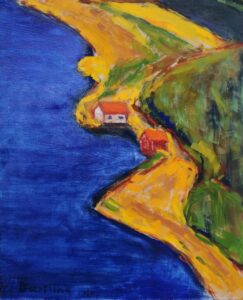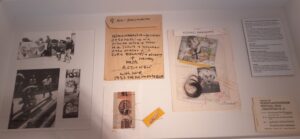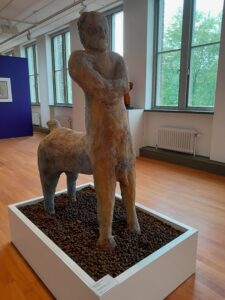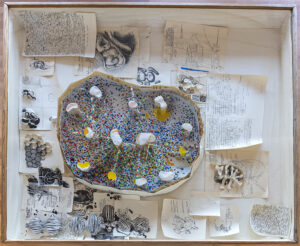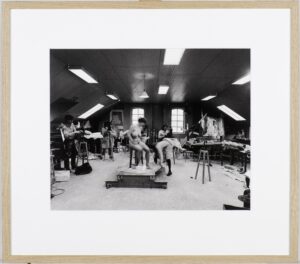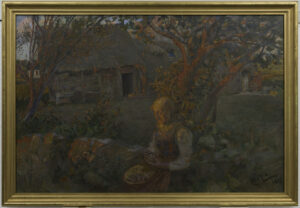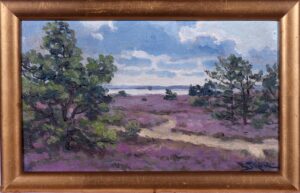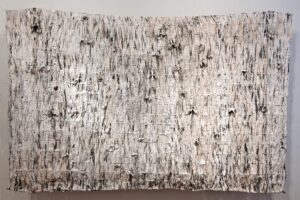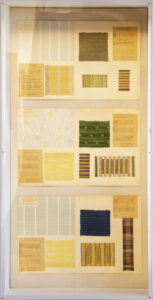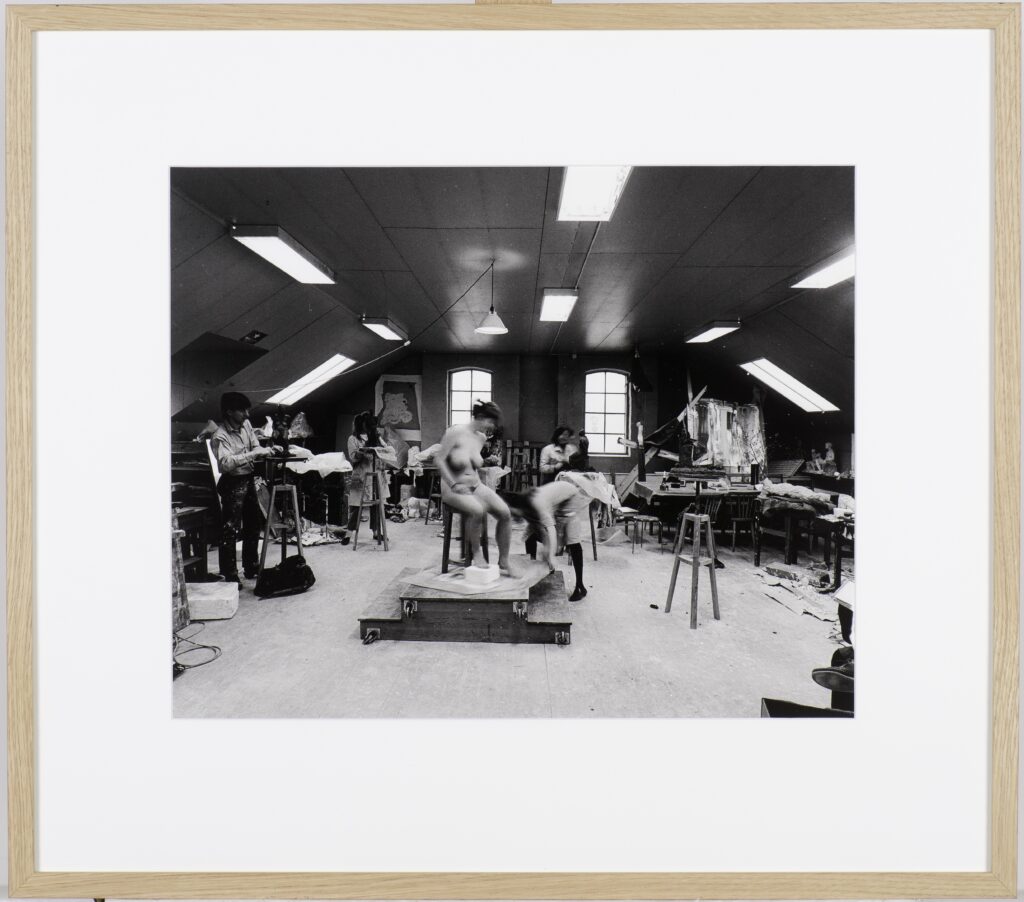Art and science – Nude studies
Studies of the naked human body are still common at art schools. Learning how to draw a human and her anatomy has throughout art history been considered the basics of pretty much everything else. At the Royal Academy of Fine Arts in Stockholm male models worked from the institution´s start in the late 18th century, and a few female were employed on an hourly basis. The first female model who got a proper employment was hired in 1839. Those who recently had started their studies, however, were not allowed in those classes, as there were concerns about whether they would consider the naked female model as an erotic object rather than an artistic tool. Women were allowed to study at the Academy from 1864, but in the beginning the models they drew, both male and female, wore shorts as total nudity was considered inappropriate for women.
Olle Waller´s photography shows a sculpture lesson at Fria Målarskolan, a former art school in Halmstad, where Waller was the managing teacher. The schools has given prepatory art studies to many today established artists, who have studied there from the 1960:es up until 2015 when the school closed down. The photo, with students by their banding wheels around a naked female model, is from the 1980:es. By then the idea of protecting female students from nudity was long gone.
One of Olle Waller´s students was Mia Lundqvist. On the wall at the end of the room is a painting by her, which is related to Fria Målarskolan. It is a tender-hearted portrait of the artist Günther Teutsch, another of Lundqvist´s teachers at the art school. The portrait becomes an hommage and a gratitude to one of those who contributed in Lundqvist herself becoming an artist. Together with Hardy Strid, Teutsch started the school in the 1960:es.
The painting shows a smiling, older artist with whitened hair and lively eyes, who crosses his arms as he sits in his studio. He is surrounded by bodies in terms of small and somewhat larger sculptures. A bust stands on a banding wheel, behind it a backlight slips through a white curtain. Günther Teutsch leans forward a little, towards the observer. It´s notable that there was a relation between the artist who painted and the artist who was portrayed.
